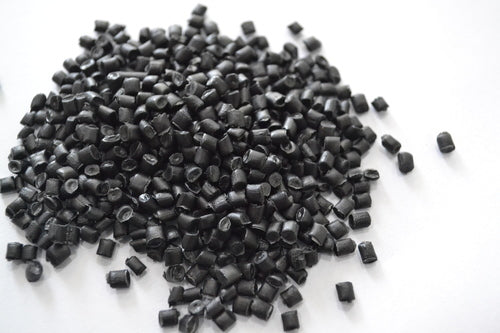HDPE Handles for our Parangs
All our parangs have durable, waterproof, HDPE handles. We occasionally receive inquiries about wooden handles parangs (which we don’t currently sell) and understand why: wooden handled tools and blades have a sleek, traditional, nostalgic look to them. Some of our favorite knives have nice wooden handle scales. So why did we go with HDPE for the parangs? Two primary reasons:
Upkeep/durability, and cost.
What is HDPE?
HDPE stands for High-Density Polyethylene. It is a thermoplastic polymer made from the monomer ethylene. It is sometimes called "alkathene" or "polythene" when used for HDPE pipes. With a high strength-to-density ratio, HDPE is used in the production of plastic bottles, corrosion-resistant piping, geomembranes and plastic lumber. HDPE is commonly recycled, and has the number "2" as its resin identification code.
HDPE handles are becoming increasingly popular for all kinds of tools and blades, and for good reason. They offer a number of advantages over traditional wooden handles, making them a great choice for those who demand durability, comfort, and performance.
How HDPE Handles are Made
HDPE handles are made using a process called injection molding. This process starts with HDPE pellets, which are heated to a molten state. The molten plastic is then injected into a mold, where it cools and hardens into the desired shape. This process allows for a high degree of precision and repeatability, ensuring that each handle is identical.
Why HDPE Handles are Good Choices for Handles
HDPE handles offer a number of advantages over traditional wooden handles, including:
- Strength and durability: HDPE is a very strong material that can withstand a lot of abuse. It is also resistant to chemicals and moisture, making it ideal for use in harsh environments.
- Lightweight: HDPE is a lightweight material, which makes it easy to carry and maneuver the tool. This is on long hikes, trips, and adventures as we all tend to count ounces to save weight and move quickly and easily through the bush.
- Comfortable grip: HDPE handles are designed to provide a comfortable grip, even when wet. This is important for preventing hand fatigue and blisters.
- Maintenance-free: HDPE handles are low-maintenance and do not require any special care. This is a great benefit for high humidity environments or constant changes in environment, where wooden handles may crack, split, or breakdown without regular treatment.
Why Our Parangs have HDPE Handles
In addition to the general advantages of HDPE handles, they also offer some specific benefits for machetes, including:
- Weather resistance: Easily #1 on our list, these tools require virtually zero maintenance other than touching up the edge before use. No oiling handles, no worry about moisture damage, no worry about water at all. The blade itself will build up a great patina and you'll be all set!
- Impact resistance: HDPE handles are more impact-resistant than wooden handles, making them less likely to break if they are dropped or hit with a hard object.
- Slip resistance: HDPE handles are less slippery than wooden handles, even when wet. This is important for preventing accidents when using a machete in wet or humid conditions.
- Cost-effectiveness: HDPE handles are more cost-effective than wooden handles, making them a good option for budget-minded outdoorsmen.
Should you get a HDPE Plastic Handle Parang or a Wooden Handle Parang?
Ideally, get both! It's nice to have the traditional, elegant, craftsmanship of a wooden handled parang, but it's not the tool to leave in the shed or back of the truck that's for sure. That's where you need the durable HDPE to take the abuse and come back for more.
The main difference between HDPE and wooden handles is the material they are made from. HDPE is a plastic, while wood is a natural material. This difference in materials gives HDPE handles a number of advantages over wooden handles, as outlined above.
However, there are also some potential drawbacks to HDPE handles. For example, they can be more brittle than wooden handles and may not last as long if they are not properly cared for. Additionally, some people find that HDPE handles do not have the same "feel" as wooden handles. It certainly doesn’t have the wow factor or the traditional feel as a wooden handled blade.
Ultimately, the best choice for a handle will depend on the individual user's needs and preferences. If you are looking for a durable, lightweight, and comfortable handle that is also cost-effective, then an HDPE handle is a good option to consider. However, if you prefer the feel of a wooden handle or prioritize the aesthetic, then a wooden handle is probably a better choice

